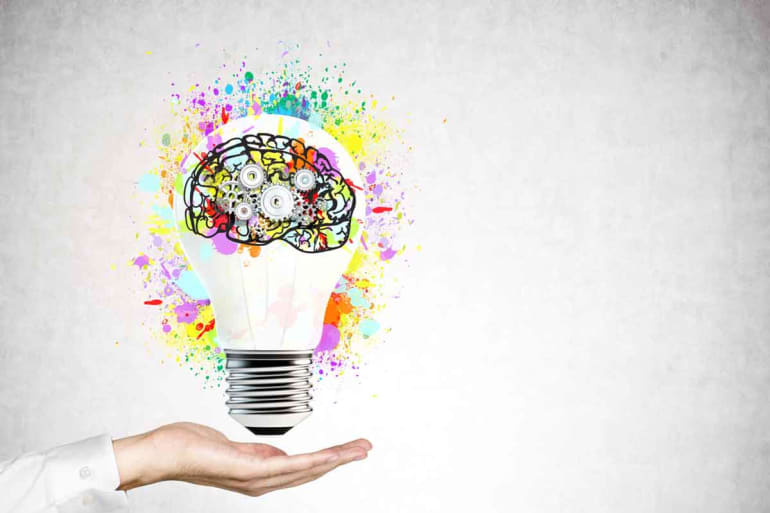Prescription opioids are a type of medication used to treat moderate to severe pain. When used responsibly, they are an important and helpful part of supervised medical treatment plans. There are incredible risks associated with opioids, though, that must be considered when used with a patient.
The addictive potential of prescription opioids is no secret. Thousands of news and journal articles outline the extent of the opioid epidemic in the United States. More than an estimated 130 people die every single day as a result of opioid-related overdoses. People who misuse and abuse their prescriptions put themselves at extreme risk of numerous complications.
You have likely heard about them to some extent but what exactly are prescription opioids? How are they made and how do they affect the people who use them? What makes these medications so addictive? And how can someone with a prescription opioid addiction find help? Continue reading to learn more about prescription opioids.
What are Opioids?
Opioids describes a broad group of drugs including heroin, prescription opioids (painkillers), and synthetic opioids. The substance is found in opium poppy plants and is used for its pain relieving properties. Prescription opioids use the poppy plant itself. Synthetic opioids use a similar chemical structure that was manufactured in a lab.

Dozens of prescriptions fall underneath the opioid category, including some of the popular drugs like:
- Oxycodone (OxyContin, Percocet)
- Hydrocodone (Vicodin)
- Fentanyl
- Codeine
- Morphine
They are all known for their powerful pain-relieving and body-relaxing effects. Opioids also cause feelings of euphoria, a “high” that makes them popular for recreational use. People who use opioids non-medically put themselves in danger of developing a substance use disorder.
A Definition of Opioids
Prescription opioids are used to relieve discomfort and pain in patients, usually as a part of an overall treatment plan. Responsible doctors keep a close eye on those who receive opioid prescriptions because of their high potential for addiction. They should always be used on a short-term basis and replaced with a non-narcotic medication as soon as possible.
Some people who receive a prescription for opioids find themselves misusing the drug without ever meaning to. Opioids work by attaching to opioid receptors in the brain which are responsible for the sensation of pain. The body quickly develops a tolerance to these drugs, though. This means a person needs more of the drug to achieve the same effect.
For example, they might go home with the direction to take one pill every four to six hours. After taking this dosage for a week they may notice the pain relieving effects aren’t as strong. This encourages some people to take two pills instead of one in order to achieve the same level of pain relief.
It might seem innocent enough at first but this choice could be life-threatening. Misusing prescription opioids is a steep slope that lands many people in a using cycle they never imagined possible.
What Are Opioids Made Of?
Opioids are a substance derived from the pods of a poppy plant. It is a naturally-occurring substance that is harvested and used to create numerous types of drugs, from FDA-approved prescriptions to heroin.
There are two types of opioids used in medicine. One type uses naturally-occurring opioids and the other uses a synthetic opioid structure created in a lab. For example, morphine is made directly from the poppy plant while fentanyl is made from a synthetic opioid structure.
Both types of opioids have a high potential for addiction. They both interact with the brain’s opioid receptors which limits their reception of pain messages. Whether they’re natural or synthetic, opioids can kick off a dangerous pattern in even the most unsuspecting person.
OxyContin, Vicodin, codeine and morphine are all examples of natural opioids. Fentanyl, tramodol, and methadone are all examples of synthetic opioids.
Chemistry of Opioids
Synthetic opioids are manufactured to closely resemble the composition of natural opioids. This means both prescription opioids and synthetic opioids are chemically related. They interact with and activate opioid receptors in cells throughout the body. Opioid receptors are responsible for the perception of both pain and pleasure. They are located in parts including:
- Brain
- Skin
- Spinal cord
- Immune cells
- Gastrointestinal tract
When opioids bind to the body’s opioid receptors, they activate the receptors and block the pain signals sent to the brain. They also release significant amounts of dopamine, the “feel-good” chemical in the body. The result is an overall feeling of lightness, numbness, and overall euphoria.
The physical effects of the drug are one factor but this psychological response is what makes opioids so addictive. Some people find themselves chasing after this calm high from the first time they misuse opioids. They crave the carefree world of an opioid high that settles in once those opioid receptors are activated.
Why Are Prescription and Synthetic Opioids Different Than the Body’s Opioids?
Opioid receptors exist because the body produces natural opioids as part of the bodily system. What is it that sets prescription and synthetic opioids apart from the body’s naturally-occurring opioids, though?
A study from UC San Francisco revealed a possible reason for the addictive potential of these drugs. Naturally-occurring opioids bind to the surface of nerve cells in the body. Prescription and synthetic opioids, on the other hand, attach to both the surface of the cell and receptors within the cell as well.
According to the study, this extra level of attachment could explain why the external opioids produce a more rewarding experience. The body can’t replicate this feeling naturally so they continue seeking the secondary level with the use of opioids.
Street Names and Nicknames for Opioids
There is a wide range of street names for opioids because the drug class covers a range of substances. Oftentimes people refer to the drugs by their names, depending on the type of pills they’re looking for. Still, there are nicknames for various opioids that some people use.
Codeine
- Lean
- Purple Drank
- Sizzurp
- Loads
- Pancakes and Syrup
- Cody
- Captain Cody
Fentanyl
- China White
- China Girl
- Dance Fever
- Apache
- TNT
- Friend
Hydrocodone (Vicodin)
- Vike
- Watson-387
Hydromorphone (Dilaudid)
- Dillies
- D
- Footballs
- Juice
- Smack
Meperidine (Demerol)
- Demmies
- Methadone
- Amidone
- Fizzies
Morphine
- White Stuff
- M
- Miss Emma
- Monkey
Oxycodone (OxyContin or Percocet)
- Oxy
- O.C.
- Oxycet
- Oxycotton
- Hillbilly Heroin
- Percs
Oxymorphone (Opana)
- Blues
- Blue Heaven
- Mrs. O
- O Bomb
- Octagons
- Stop Signs
- Biscuits

Hawaii Island Recovery offers 3 powerful evidence-based treatment therapies as part of the well-rounded approach to your treatment.
More infoWhat are Opioids Used For?
Opioids are used to treat moderate to severe pain, especially after medical, dental, or other surgical procedures. They bind to opioid receptors throughout the body and limit the pain signals these receptors send to the brain.

They are also used recreationally by people looking for a quick high. Taking a higher dose than is usually prescribed causes a calm, relaxed, and euphoric feeling that is both addictive and illegal.
Opioids for Medical Use
Prescription opioids eliminate discomfort while a person is hurt or make the recovery process more tolerable following surgery. They help people who are in extreme pain so they can have as comfortable a day as possible. Opioids can be a helpful medication as long as they’re used as prescribed.
Stronger opioids like morphine and Dilaudid are used mostly within a supervised hospital setting. These powerful painkillers can be dangerous in the wrong hands and put people at risk of overdose if they use too much.
Vicodin, Percocet, and codeine are prescription opioids more readily available outside of medical facilities. A person still needs a prescription to use them legally but they can purchase the medications at a pharmacy if a doctor prescribes them.
Illegal Uses of Opioids
The pleasurable effects of prescription opioids that occur when you abuse the medications make them a popular drug for recreational use. They cause users to feel calm and relaxed, along with a feeling of euphoria.
Prescription opioids are a Schedule II substance with the Drug Enforcement Administration, due to their high abuse potential and severe risk for dependence. Opioids in this category include:
- Vicodin
- Methadone
- Dilaudid
- Demerol
- OxyContin
- Fentanyl
This means that it’s not only dangerous to misuse or abuse opioids, but it’s also illegal for someone to use them for any reason if they don’t have a prescription. They put both their health and their record at risk when they use these drugs recreationally.

Learn more about OxyContin, a powerful prescription opioid used to treat severe, long-term pain. It’s also a popular drug for recreational use and abuse. What is OxyContin? Uses, Side Effects, Contraindications, Dangers, and More.
More info
Ambien is a powerful, brand-name prescription medication used to treat severe sleep problems, particularly insomnia. Read more about side effects, addiction to Ambien, and treatment.
More infoEffects of Opioid Use
People use opioids medically because of their pain-relieving, and recreationally because of their calming, euphoric effects. There are additional less-desirable side effects of opioid use outside that come along with the pleasurable effects.
Short-Term Effects of Opioids
Short-term effects of opioids usually happen while someone is using the drugs, or soon after they have used them. These effects last during and shortly after use but aren’t necessarily long-lasting. Short-term effects include:
- Slowed breathing
- Dry mouth
- Drowsiness
- Itchiness
- Difficulties concentrating
- Headache
- Constipation
- Nausea
- Unconsciousness
- Coma
Long-Term Effects of Opioids
If someone uses opioids for months or years, they put themselves at risk of developing long-term effects that are sometimes irreversible. These effects range from slightly uncomfortable to debilitating or life-threatening.
- Tolerance
- Physical dependence
- Abuse or addiction
- Withdrawal symptoms
- Depression or anxiety
- Irregular heartbeat or pervasive heart conditions
- Increased risk of heart attack
- Gastrointestinal issues
- Hormone imbalances
- Weak bones
- Increased sensitivity to pain
Some symptoms lessen or disappear entirely after a while, but others take longer to go away. Depending on how long a person uses opioids for or the amount of drugs they use, they may develop symptoms that last for the rest of their lives. How People Use Opioids People can take opioids a few different ways:
- Orally (ex. pills)
- Snorting
- Intravenous (ex. liquid morphine)
- Smoking
Since the majority of opioids come in a pill form, taking them orally is the most common way to use them. Effects take the longest to come on when a person ingests a medication orally. This leads some to look for other ways to ingest them in order to feel the effects quicker.
This is the main reason that stronger opioids are offered in an intravenous form while under medical supervision. People not under medical supervision find other ways to achieve these quick effects.
Some simply crush the pills and snort them. Others crush the pills and mix them down with water. This creates a solution they can inject intravenously which is the fastest way to feel the effects of opioids, but also the most dangerous way. Injecting opioids is the easiest way to accidentally overdose.

Healing at Our Hawaii Residential Center We offer residential treatment programming at our rehab center for a minimum of 30 days and up to 90+ days, depending on medical necessity. Residential Treatment Center in Hawaii We offer residential treatment programming at our rehab center for a minimum of 30 days…
More infoAddiction to Prescription Opioids
When new prescription painkillers came to the market in the 1990s, pharmaceutical companies insisted their medications were safe. They reassured the medical community there was no addiction potential with their drugs.

Doctors started prescribing them at large but soon realized that companies weren’t telling the truth. The possibility of developing a dependence on or addiction to prescription opioids was and still is incredibly high.
Overdose rates increased throughout the early 2000s and today are at an all-time high. The United States has an extensive, nationwide opioid epidemic gripping the country. And it shows no signs of slowing or stopping soon.
Why Are Prescription Opioids Addictive?
Researchers and scientists created prescription opioids as an alternative to the incredibly addictive morphine. They wanted to create something that relieved their patients’ pain without them developing a dependence.
But the structure and function of prescription opioids are the same, both natural and synthetic. They bind to opioid receptors and limit or block the body’s ability to sense pain. They cause a euphoric high when taken in high doses. And they’re as addictive as the drugs they intended to replace.
Not everyone who uses prescription opioids becomes addicted. There are plenty of people who use their medication as prescribed and wean off it once they’re no longer needed. They properly dispose of any leftovers and don’t think twice as they move forward with their lives.
Some people, whether knowingly or unknowingly, aren’t as fortunate. People who know they have a predisposition to addiction also need to take caution when using prescription opioids. These individuals enjoy the relief brought on by opioids and try to continue that feeling by taking more, creating a dangerous, downward spiral.

Xanax is a prescription medication in the benzodiazepine class. It’s helpful for treating anxiety disorders but it’s also a common drug for recreational abuse.
More info
Benzodiazepines are a helpful medication for those who struggle with anxiety and sleep disorders. But they’re dangerous in the hands of recreational users.
More infoPrescription Opioids Abuse
Dependence is a part of opioid use, for both people who use it as prescribed and those who don’t. Their body develops a tolerance to the medication and relies upon it for the relief it provides. Tapering off prescription opioids relieves some of the discomforts that come with stopping use.
Some choose to continue taking prescription opioids after they no longer need it. This veers into the territory of prescription opioids misuse, which describes any use that is outside of their doctor’s prescribed directions. People who take opioids without a prescription, or use them to get high, are also misusing the drug.
Prescription opioids abuse refers to overuse that is dangerous and, in some cases, compulsive. People who abuse prescription opioids put themselves at high risk of both short-term and long-term health problems. Opioids abuse is a serious problem
Statistics and Facts on Prescription Opioids in the U.S.
Prescription opioid abuse is at a crisis level in the United States today. It affects a growing number of people each year according to dozens of studies and extensive research. The statistics surrounding prescription opioids use, abuse, and overdoses are alarming.
Studies estimate that 21 to 29 percent of people misuse their opioid prescriptions. 8 to 12 percent of those prescribed opioids develop an opioid-related substance use disorder. Opioid overdoses continue rising every year across the country. Between July 2016 and September 2017, research revealed:
- 30 percent increase in 52 areas across 45 states
- 70 percent increase in the Midwestern region
- 54 percent increase in the large cities of 16 states
Additionally, an estimated 10.3 million people misused prescription opioids in some way in 2018. Of those people, 2 million struggled with a prescription opioid-related substance use disorder. And more than 130 people died of an opioid overdose every single day in that same year, over 47,600 people in total.
Where Can You Treat Prescription Opioids Addiction?
is remarkable experience. Snorkeling is a part of treatment program at Hawaii Island Recovery.
If you or a loved one are trapped in the grips of a substance use disorder, escape might feel impossible. Thankfully, prescription opioids addiction doesn’t have to be the end of the road. There is hope for escape from the cycle of abuse and recovery is possible. Are you wondering where you can treat prescription opioids addiction?
Addiction treatment facilities help thousands of people separate from prescription opioids and other substances every year. Hundreds of facilities across the United States offer treatment programs for those looking to quit using drugs.
Different levels of addiction treatment exist for people depending on numerous factors. For example, facilities consider their opioid of choice, length of use, and amount used when determining the appropriate level of care.
Treatment facilities exist across the country, from coast to coast and everywhere in between. You can find a solution for your prescription opioids addiction wherever you might be.
How Do You Treat Prescription Opioids Addiction?
Addiction treatment facilities are an important part of treating prescription opioids abuse and addiction. They offer intensive care throughout the entire recovery process, from the first few days of detox to aftercare following program completion.
Treating prescription opioids addiction is a complicated process because every person is slightly different. They have different substances they prefer, different lengths of time they’ve used, different backgrounds that got them to where they are. Some struggle with mental disorders or mental illness as well as their substance use, qualifying them for dual diagnosis.
Most facilities develop prescription opioids addiction treatment plans on a case-by-case basis. They assess the needs of each individual who walks through the doors of their treatment center. This gives them insight into the best ways to approach and work with the clients that come through their doors.
Effective addiction treatment for prescription opioids includes a combination of methods. Each program offers its own options, including approaches like individual and group therapy, experiential therapy, holistic healing methods, and more.
Get Addiction Treatment
If you or a loved one need help, call Hawaii Island Recovery toll-free right now.
866-390-5070 Hawaii Island Recovery
Hawaii Island Recovery 










